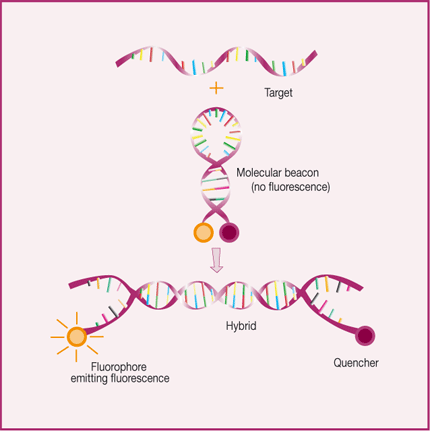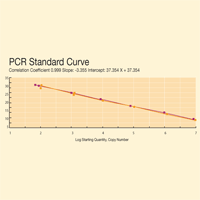|
|
 |
PCR基础简介
Backgrand of PCR Technologies
|
|
 |
 |
Real time PCR
|
| |
 |
Real-Time PCR Process
|
| |
In real-time PCR, the detection step is combined
with amplification: the amplified target nucleic acid
is visualized in real time as a fluorescent signal.
This signal is generated at each PCR cycle only when
a specific oligonucleotide probe called a molecular
beacon, linked to a fluorophore, hybridizes with the
amplified target DNA. As the amount of amplified DNA
increases with each round of amplification, fluorescence
intensity also increases. During each PCR cycle, a real-time
PCR instrument such as the iQ5 or Chromo4 system measures
the fluorescence signal, and the associated software
plots a graph of the fluorescence intensity versus the
number of cycles. |
 |
|
| |
 |
 |
Real-Time PCR Quantification |
| |
 |
| |
Real-time PCR is the perfect method for the quantification
of a target nucleic acid in a food or water sample.
After amplification of the target nucleic acid in parallel
to calibrated quantification standards, the number of
initial DNA copies in the sample can be automatically
calculated by the real-time software without requiring
any additional operations. The software simply constructs
a standard curve from the values recorded for the quantification
standards and plots the values for the samples against
this standard curve. |
|
|